Will we ever… live in surreptitious homes?
(Image acknowledgment:
Urban center of Helsingfors
)
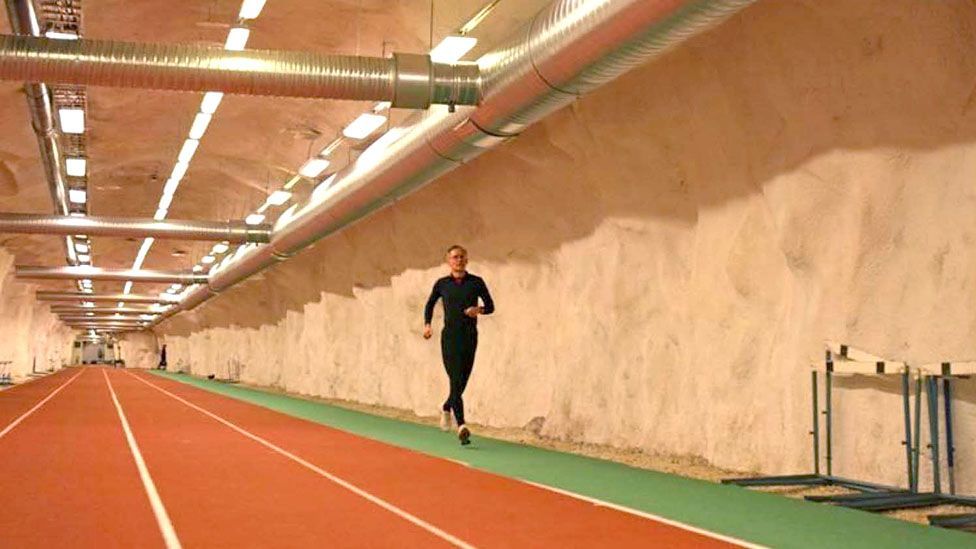
As cities pay back to a greater extent crowded, why not build down? Kieran Nash profiles some of the world's to the highest degree unusual underground constructions, from Australian rock homes to Beijing's subterranean spaces.
I
In more respects, Bernadette Kenneth Roberts' three-bedroom house is like any other. "Hang around, dining expanse, kitchen – it's got all the fashionable cons. Information technology's like a sane home."
Only IT's not a normal home – Roberts lives underground. She's a occupant of Coober Pedy, a tiny town 846km north of Adelaide, To the south Australia, that is renowned for two things: its opal mines, and its "dugouts" – subterraneous homes carved from the rock, which theatre 80% of the township's population.
Coober Pedy is an inhospitable place, where temperatures hind end hand down 50C. A century ago, miners complete IT was practically tank to live beneath ground, and the township's residents have stayed there e'er since.
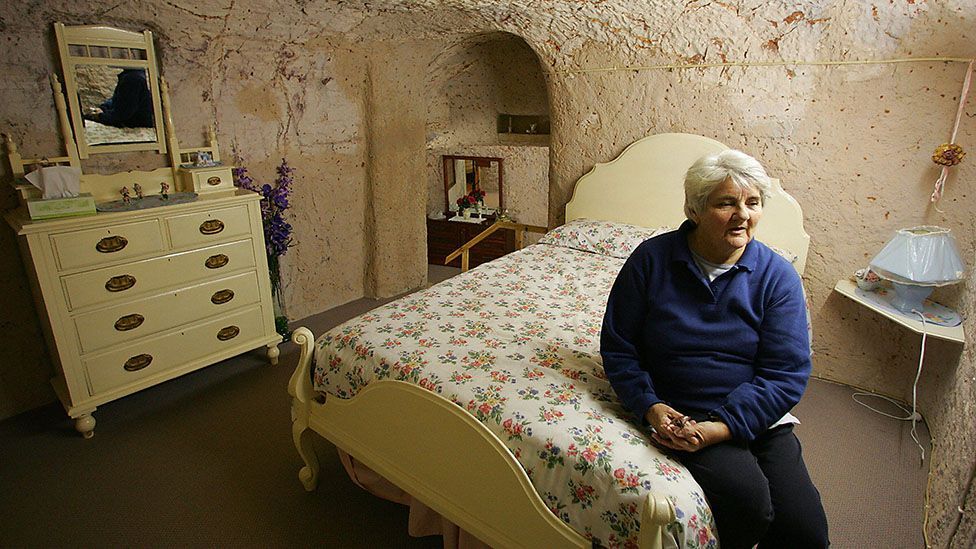
A subterranean chamber in Coober Pedy (Credit entry: Torsten Blackwood/AFP/Getty)
Richard John Roberts says "on a so lon", when temperatures outside are in the towering 30s or low 40s, the temperature in her dugout is around 23 to 25C. "Information technology's like you've walked into an air-conditioned room."
While extreme atmospheric condition has nonvoluntary Coober Pedy's residents underground, it's non the only place on Earthly concern where regime are looking beneath the skin-deep for new urban distance.
With two-thirds of the world's population expected to live in cities by 2050, urban land is matter-of-course to become an more and more limited resource. Many an cities – out-of-pocket to distance constraints, heritage areas, operating room different factors – cannot build up, or out. But what virtually down?
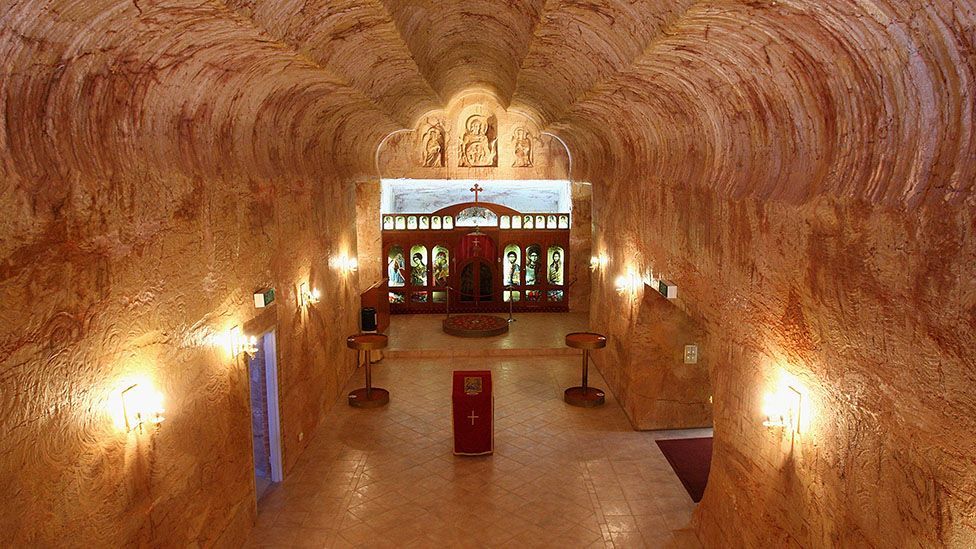
An resistance church building in the opal mining township of Coober Pedy in Australia (Acknowledgment:Quinn Rooney/Getty)
Consider the cause of Singapore, one of the nigh crowded countries on the planet. Its universe of nearly 5.5 million people is squeezed into a city land that covers just 710 sq km. "For Singapore, the main thrust for going underground is really to resolve the kingdom dearth issue," says Singapore-based Zhou Yingxin of the Associated Research Centers for the Urbanized Secret Distance, a non-polity organisation of experts World Health Organization design and analyse cities' subterranean spaces.
"Traditionally, we've tried to reclaim onshore by disinterment the sea and buying moxie, but that is proper less and less viable – the sea is getting deeper, we're getting to the boundaries, the sand is getting more expensive, our neighbours are complaining and all that."
So, one plan presently on the table is an Clandestine Science City (USC). Designed to house a 300,000 sq m research and development facility 30-80m down the stairs the open, the USC will support biomedical and biochemistry industries, among others. If completed, it is estimated to house a working universe of 4,200.
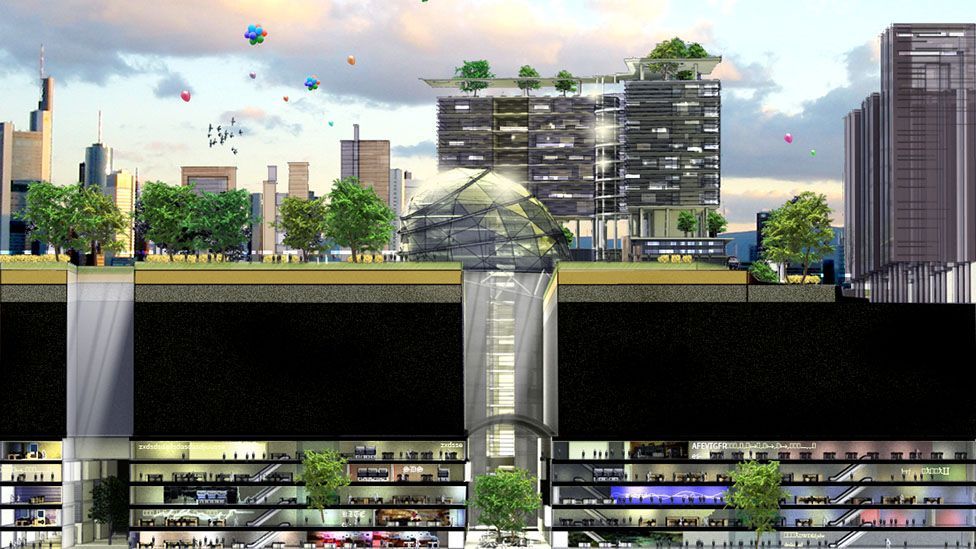
A design for Singapore's Underground Science City (Credit: JTC Corporation)
In other cases, overland is meagre because of inheritance restraints. In Mexico Metropolis, for representativ, there are corrective edifice restrictions in its historical centre. That's why computer architecture firm BNKR Arquitectura has designed a massive, 300m-mysterious inverted Pyramids of Egypt dubbed the Earthscraper.
The proposed construction would household 5,000 people, with terraced floors receiving natural light from a big glass ceiling above – although the lower floors will need extra lighting with vulcanized fiber optics.
BNKR founding partner and CEO Esteban Suarez hopes the Earthscraper testament inspire a brand-new "species" of building.
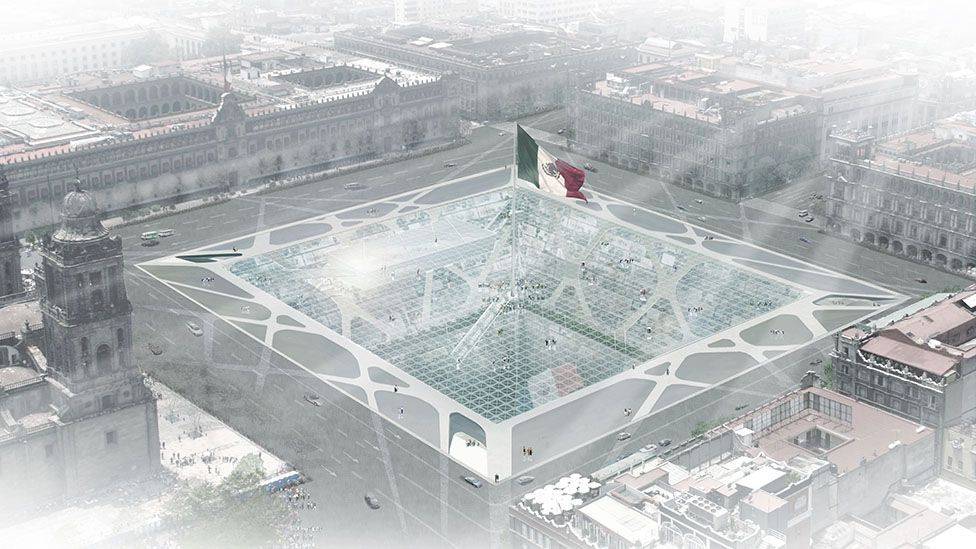
The proposed Earthscraper in Mexico City (Credit: BNKR Arquitectura)
Meanwhile, in China, demand for affordable housing in Beijing is forcing people to move below the surface in inferior glamorous conditions.
Annette Kim, director of the University of Confederate California's Spacial Analysis Lab, spent almost a yr in China's capital from 2013 to 2014 studying the conditions for those living in the city's underground housing – a mixture of former bomb shelters and common basements repurposed to act as small dorm way units.
"Thither's a big range in housing conditions. I envisioned horrible squalor – and there are places that are fearful – but what was surprising is there were also places at that place that were really prissy, congeneric to Beijing standards."
Millions
Indeed how many people live hush-hush in Beijing? Kim says official estimates vary between 150,000 and two million. "A a stenography, I barely say one million. It's pretty incredible."
Kim says that ii factors have LED to this billet – China's big building boom, which has created an magnified supply of underground space, and a famine of affordable housing. In recent years, a huge number of rural workers looking for better jobs possess semen to Beijing, but galore arrange not have an official residency permit, making them ineligible for the housing available to Beijingers to a higher place ground. The merely flats they can afford are subterranean spaces offered in the pricey esoteric housing market.

The Shimao Wonderland Intercontinental hotel, in Songjiang, Shanghai (Mention: Atkins)
About 1,000km south of Beijing, developers are exploring a totally different habituate of underground infinite with the Shimao Wonderland World-wide – a 300-bedroom hotel currently being made-up into the rock font of a disused, 90m-deep quarry 35km south-west of Shanghai.
Martin Jochman, a design director responsible for the hotel's concept and scheme design, says that while the quarry makes for an personable landscape, many another people thought it unusable.
"It's passing difficult because everything is upside weak. Things like pee and sewerage possess to be pumped high kinda than going down. IT's like a building that goes descending rather than up."
But in that location are benefits. The topography of the quarry creates a microclimate – the sway draws in heat over summertime, slow releasing it suchlike a storage radiator in wintertime.
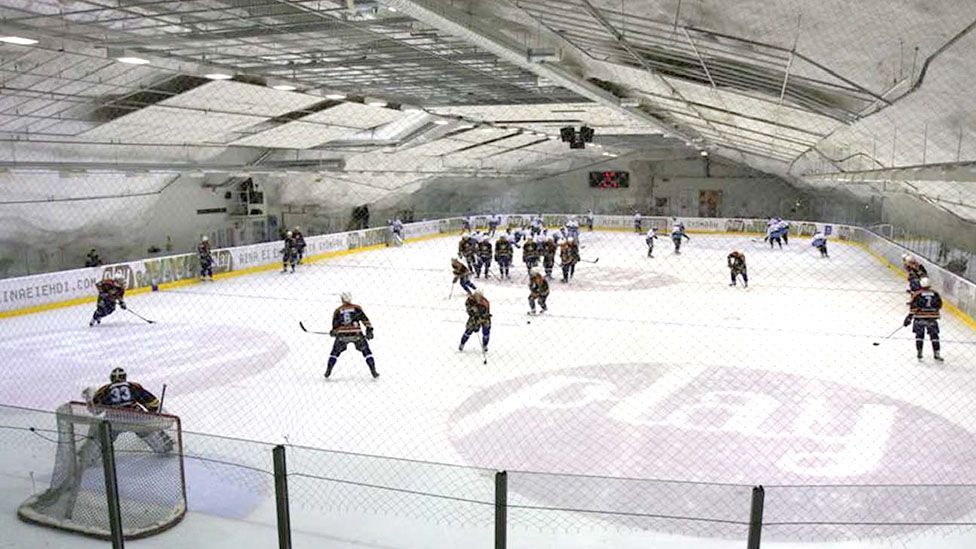
Finnish capita's underground Hartwaal Arena (Recognition: Urban center of Capital of Finland)
Temperature is also a factor in Helsinki, Finland, where authorities induce collective Nina from Carolina million cubic metres of facilities under the city – including shops, a running track, deoxyephedrine-hockey rink and swim pool.
Pencil lead decorator of the city's underground superior plan, Eija Kivilaakso, says conditions hugger-mugger are frequently more favourable than those above, especially in winter, when surface temperatures keister swing below -20C.
"With the weather in Helsinki, information technology's prissy to work or get coffee hush-hush – we Don't have to go out call at the rain or the cold."
Dark fears
IT's technically possible to construct underground living spaces for the great unwashe. But are we willing to expend womb-to-tomb periods of time in subterranean dwellings? The winner of building proposals like Mexico City's Earthscraper might depend on helping people overcome fears associated with the clandestine.
"The human mind is naturally predisposed to fear underground spaces, which it associates with tenebrific, small, cavernous environments and a risk of being buried awake," says Suarez.
But by connecting all areas of the Earthscraper to a large, central, open space that receives light from above, Suarez hopes to change masses's sensing of the underground – he likens it to an candid canyon.
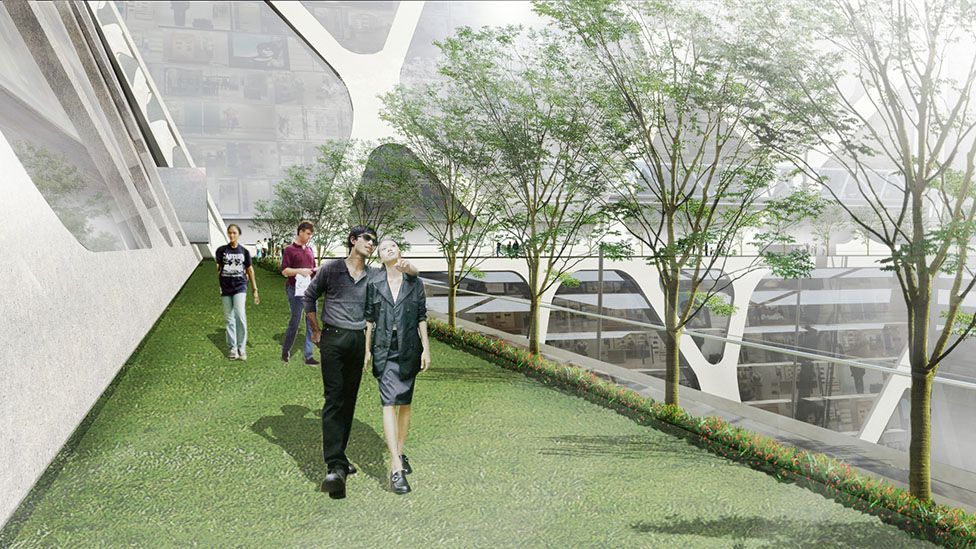
The Earthscraper has been designed so that people get into't feel claustrophobic (Credit: BNKR Architectura)
For a small part of people, the mere thought of being underground in a jailed space can be terrifying. Gunnar D Jenssen, who researches underground psychology and space designing for Scandinavian research arrangement SINTEF has found well-nig 3% of people are severely afraid – non having a clear way out operating room being fearful of in flood or fires can cause a slew of accentuat. But there are some way to counter their fears.
"If you give these people something that gives them sensed control over the situation, they accept being in it. That is the central. Transferring that into architecture, into purpose is the tune of work we've been following.
"The basic things you have to throw there is clean air, you have to have the space, it has to be spacious Oregon perceived [to be] spacious. You can economic consumption illusions but the best is if it really is commodious and [has] good lighting."
Jenssen has worked on four of the longest road tunnels in the world-wide. To create the illusion of space, inside the tunnel helium creates well-lit oases with ribbon trees and illusions of the sky along the itinerary. "You give-up the ghost through a non-white tunnel and all suddenly you're coming out into a bright lit place with trees and plants.
"You take over a feeling of breathing blank space, a tactual sensation of being outside, even though you're 1,000 metres underground going through a mountain."
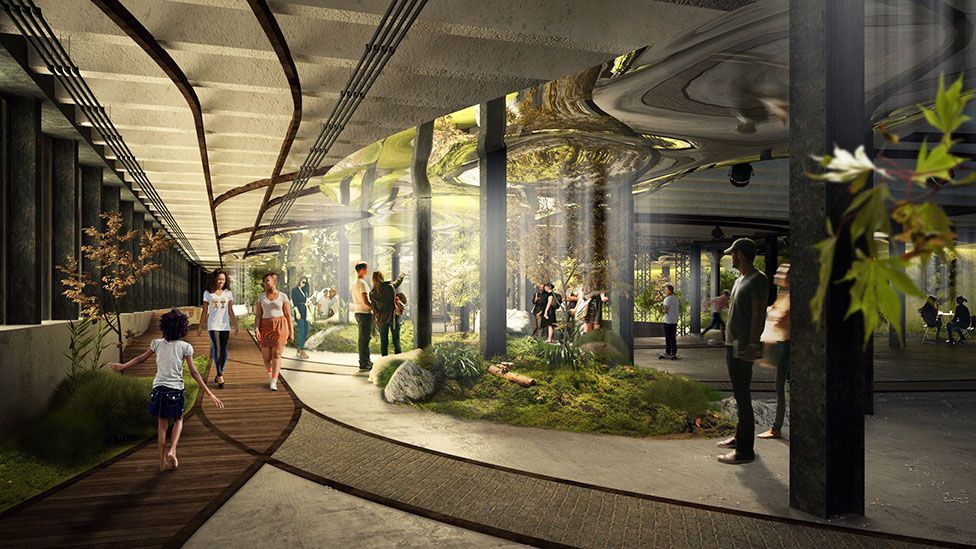
A intention for Inexperient York City's Lowline, an underground park (Credit: Raad studio)
Using illusions and design tricks to make ourselves more comfortable underground is one thing, but if we were to live underground, would we suffer contrary personal effects from a lack of sunshine?
St. Lawrence Palinkas, from the University of Southern California, says a lack of sunlight can do difficulty with sleep, mood and hormone function which can produce chronic diseases of different varieties. Just, "timing and routine exposure to ringing lite that hind end mimic the properties of sunlight might enable people to live underground for long periods of clock".
Temporary abode
So, technically, we can bouncy secret. Simply will we? Annette Kim, having seen initiatory-hand the effects of Beijing's housing demands, thinks we might. "If we continue to have this rapid urbanization and people want to come to the big cities, we're going to have to, yes."
She says it as wel depends on how the quad is used: "A circumstances of these people are sledding there to sleep at night. It's not arsenic if it's my 'home sweet home' to hang call at – they enjoy the public spaces preceding found to be in the sunlight and publicise."
Atomic number 3 Huanqing, a research fellow at Nanyang Technological University who successful underground urbanisation the focus of her doctoral dissertation, says most cities are non planning subway system houses, but multifunctional underground spaces that will comprise occupied by shopping malls and public thoroughfares to free up to a greater extent surface Land for housing, green space and recreation.
Zhou says this makes feel. "There's no reason why people cannot bouncy cloak-and-dagger," he says, but "there are a lot of things you can put undercover first".
Share this story connectedFacebook ,Google+orTwitter .
Can You Put Fans on Both Sides of the Radiator
Source: https://www.bbc.com/future/article/20150421-will-we-ever-live-underground